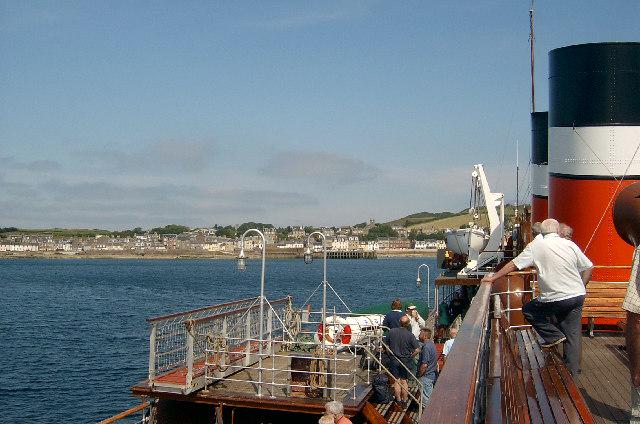
During the summer, the population grows by several thousand every weekend. Hiring a bike and cycling around the island's 11mi encircling coastal road is a popular activity for visitors, as the roads are quiet compared to the mainland. There are informal walks all over the island. Fintry Bay, around 3mi from Millport on the west coast, has a small cafe.
Millport Bay, with visitor moorings, is a popular destination for sailors in the summer. The National Watersports Centre at the ferry slip provides tuition in most boating disciplines, such as powerboating and kayaking, all year round. The most dived site on the Clyde is just south of the ferry slip – a Second World War Catalina flying boat.
There is a curling pond near the highest point on the island, in January 2010 it hosted the Dumfries Cup for the first time in 14 years, and in December of the same year it was also available for public use.
Other attractions include:
- Cathedral of the Isles – William Butterfield, one of the great architects of the Gothic revival designed the cathedral church of the Diocese of Argyll and the Isles, within the Episcopal Church of Scotland (Anglican Communion). George Frederick Boyle, 6th Earl of Glasgow acted as the founder and benefactor. Construction finished in 1849 and the cathedral opened in 1851. Formal gardens and woodland surround the cathedral, the highest building on Great Cumbrae and one of the smallest cathedrals in Europe.
- College of the Holy Spirit also known as Cumbrae Theological College – attached to the Cathedral, this former seminary for ordination training is now a Retreat House and the Argyll Diocesan Conference Centre. The College was founded by Boyle in 1849 and was affiliated to the University of Durham during the 1860s. The College closed in 1888 and the building was later used for other purposes. It was the base for The Community of Celebration, or Fisherfolk, an international group of artists and musicians sharing a Benedictine lifestyle during the 1970s and the 1980s.
- The Wedge – a private residence which has the smallest frontage in the UK – the width of a front door.
- Museum of the Cumbraes occupies part of the Garrison, built originally for the captain of an anti-smuggling revenue cutter.
- FSC Millport – has an aquarium of sea creatures from the Firth of Clyde, and a museum which tells the story of the sea and of the Clyde area, which is open daily. The FSC refurbished the existing facilities of the Marine Biological Station and created two additional blocks, one for accommodation and one for conferences. It works with schools and University groups throughout the year.
